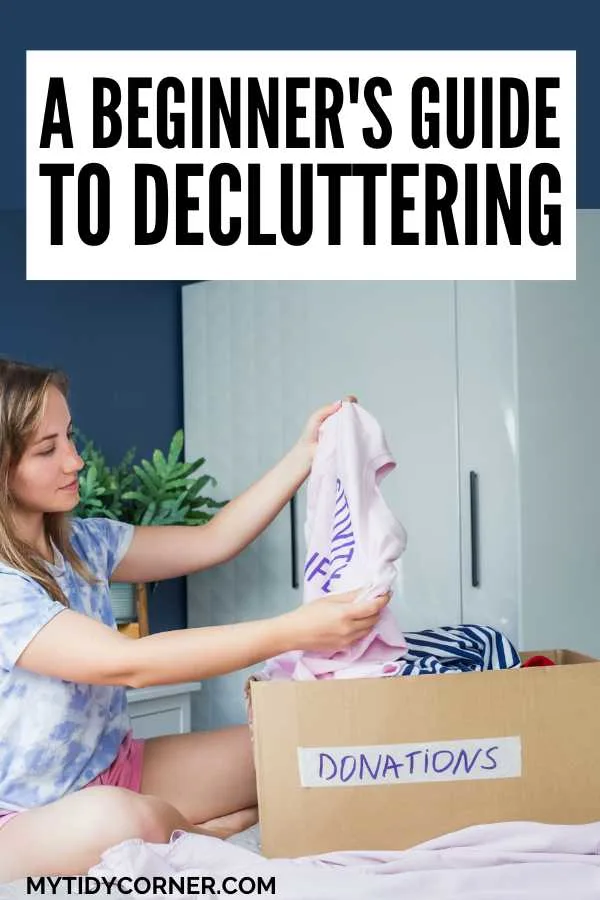Picture a serene living space where every item has its place and there’s room to breathe.
Decluttering your home is a transformative journey that goes beyond just tidying up physical spaces. It’s about creating a harmonious environment that fosters peace of mind.
Decluttering is about creating a space that resonates with your lifestyle, bringing joy and functionality to every corner of your home. The benefits extend beyond the physical realm, positively impacting your mental well-being and creating a sanctuary that promotes clarity and calmness.
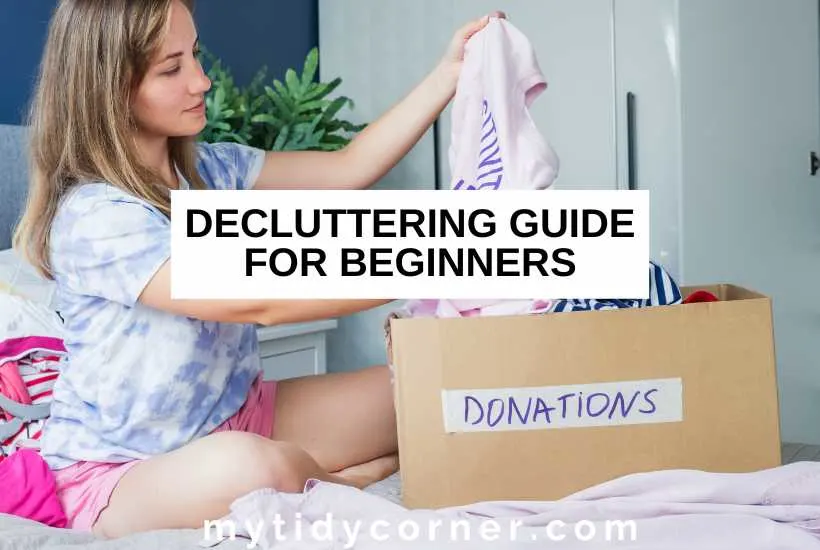
Understanding why decluttering is important can help you to use more practical steps and strategies to reclaim your space and simplify your life.
Whether you’re a minimalist at heart or new at navigating the waters of decluttering, we help empower you to make intentional choices about your living space and how to start your journey.
What is Clutter?
Clutter refers to the presence of disorganized, unnecessary, or unused items that accumulate in a given space, hindering its functionality and visual appeal.
It can take various forms, including physical possessions, paperwork, digital files, and even emotional or time-related elements.
Clutter not only disrupts the order of space but can also adversely affect mental well-being, causing stress and a sense of overwhelm.
Decluttering your home involves systematically addressing and eliminating these excess items, creating a more organized and harmonious environment that promotes clarity, efficiency, and a positive mindset.
When Does Clutter Become a Problem?

Recognizing these signs is crucial in addressing clutter before it escalates into a more significant problem. Regular decluttering and organizing efforts can help maintain a healthy and functional living or working environment.
Disorder becomes a problem when it starts to negatively impact your daily life, well-being, and overall functionality of a space.
Here are key indicators that clutter has become problematic:
- When clutter interferes with the practical use of a space.
- If the presence of untidiness contributes to heightened stress levels.
- A mess can impede your ability to focus and be productive.
- Excessive disorder can create an environment that is difficult to clean and maintain.
- Dust accumulation and poor indoor air quality.
- Dealing with clutter consistently leads to procrastination or avoidance.
- Persistent confusion can contribute to a negative atmosphere.
- A messy house may create feelings of chaos and disarray.
Why It’s Important to Declutter Your Home
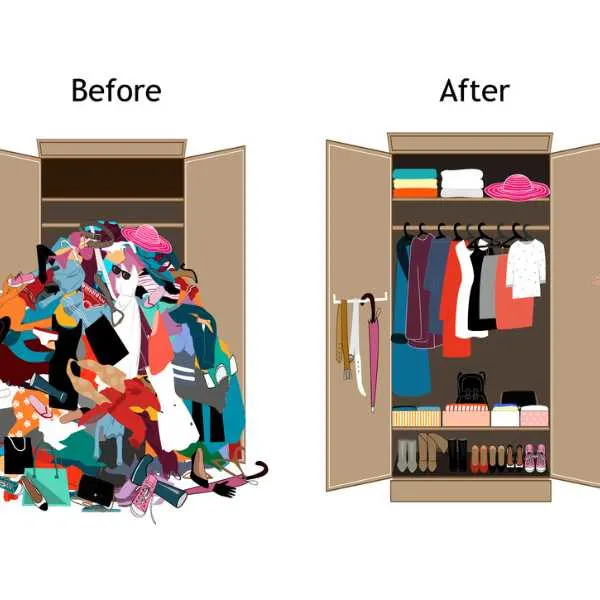
Decluttering holds a significant importance far beyond just creating an organized living space.
It is a holistic practice that transforms your physical space and positively influences your mental and emotional well-being. It’s a journey toward a more intentional and fulfilling lifestyle.
Here are some key reasons why decluttering is so crucial:
- Reduces stress and anxiety
- Increase productivity
- Enhances creativity
- Streamlines daily routines
- Positively impacts your mood
- Encourages intentional living
How to Start Decluttering in 4 Easy Steps
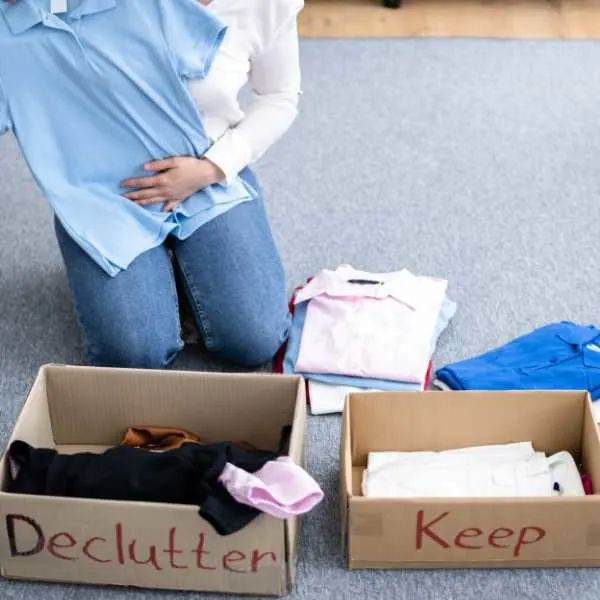
Though initially daunting, the process becomes remarkably manageable when approached with a strategic mindset. It’s essential to establish clear goals and identify the specific areas or aspects of your home and life that require attention before decluttering.
This introductory phase sets the tone for a more organized and intentional living environment.
By breaking down the process into achievable steps, creating sorting categories, and incorporating practical techniques, you pave the way for a smoother and more satisfying decluttering journey.
Remember, the key to the process is to start small and be consistent. Celebrate your progress along the way, and gradually expand your decluttering efforts to larger areas. The sense of accomplishment and the benefits of a clutter-free space will motivate you to continue the journey.
Step 1: Set Clear Goals and Timelines
Define your decluttering goals. Whether it’s organizing a specific room, downsizing possessions, or creating a more functional workspace, having clear objectives will guide your efforts.
Focus on one area at a time to avoid feeling overwhelmed. Start with a small, manageable space, such as a single drawer, closet, or countertop.
If you’re concerned about spending too much time decluttering, set a timer for short intervals, like 30 or 60 minutes. This helps maintain focus and prevents burnout.
Step 2: Create a Sorting System
Creating a decluttering system with clear categories can streamline the process and make decisions more straightforward.
Create categories for items, such as:
- Keep — Reserve this category for items that you genuinely need, use, or hold sentimental value. Be selective and mindful, keeping “only” what contributes positively to your life.
- Donate — Items in good condition that you no longer need or use can be designated for donation. Consider local charities, shelters, or thrift stores that accept donations.
- Discard — Items that are damaged, beyond repair, or cannot be recycled should go in the trash category.
Before decluttering, gather boxes or bags for each category: keep, donate, discard, and recycle. Having dedicated containers will make sorting items more efficient.
Set up designated areas for each category. Whether in a central location or specific to each room, clearly defined spaces make the sorting process more organized.
Once you’ve sorted items, take prompt action. Deliver donations, recycle materials, and dispose of trash to prevent these categories from becoming new sources of clutter.
Step 3: Start Small
Begin with a small and manageable area to avoid feeling overwhelmed. This could be a single room, a cupboard, or even certain shelves. Gradually expand to larger areas as you gain confidence.
Sort items based on their category, not their location. For example, if you’re decluttering clothes, gather all clothing items from different areas before making decisions.
Step 4: Start to Establish a Routine
Make decluttering a regular part of your routine to maintain a clutter free living space. Schedule periodic sessions to reassess and declutter as needed.
Acknowledge your achievements throughout the process. Celebrate the sense of accomplishment that comes with creating a more organized and intentional living environment.
Questions to Ask When You Declutter Your Living Space
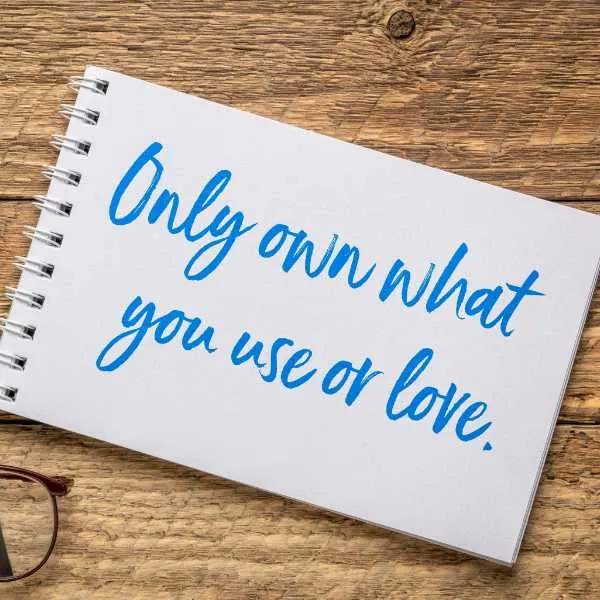
Questions can guide you through the decluttering process, helping you make informed decisions about the items in your home and ultimately creating a more intentional and organized living environment.
When decluttering your home, ask thoughtful questions to guide your decision-making and make the process more intentional.
Here 10 are some questions to consider:
- Does it still work?
- Does it still fit?
- Is it still in good condition?
- Does it have sentimental value?
- When last did I use it?
- Do I still need it?
- Do I love it?
- Can I digitize it?
- Does it serve a practical purpose?
- Is it outdated or expired?
Final Thoughts on Beginner’s Guide to Decluttering Your Home
As you declutter your home, celebrate the small victories, relish the newfound space, and embrace the journey toward a more intentional and fulfilling lifestyle.
It is a transformative experience that goes beyond simply tidying up physical spaces. By asking yourself thoughtful questions throughout the process, you empower yourself to make intentional decisions about the items you surround yourself with.
Related Decluttering Articles:
- 13 Important Questions to Ask When Decluttering Your Home
- How to Know What to Keep When Decluttering
